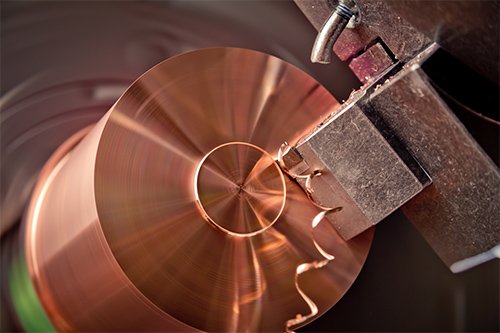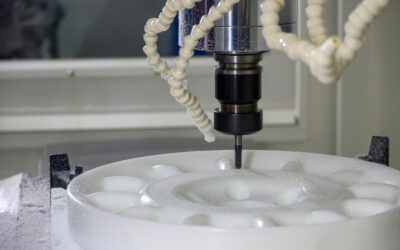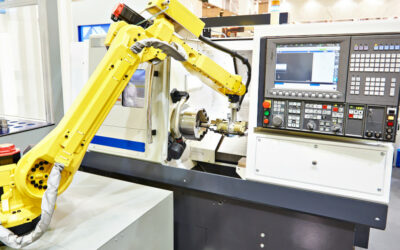Have you recently come up with a product design that features metals or metal alloys? If so, you’re likely looking for an ideal manufacturing technology to fabricate your parts accurately and precisely while meeting the required tolerance requirements.
CNC machines are among the most in-demand manufacturing technologies for metals today primarily because of their high accuracy, precision, and compatibility with a broad range of metals and metal alloys.
However, when it comes to CNC machining copper, there are several things you must keep at the back of your mind. First, you need to understand that pure copper in itself is challenging to manufacture due to its high ductility and high cold workability. Second, a ton of copper-based alloys now exist that offer similar (or even better) properties than pure copper and are relatively easy to fabricate using CNC machines.
You will have no problem choosing an ideal copper alloy for your design requirements as long as you understand the properties, benefits, and drawbacks of each of these alloys.
This article presents five common copper alloys, including their properties, benefits, drawbacks, and applications. But before we delve right into it, let’s take a look at two things you must consider when CNC machining pure copper.
Copper CNC Machining: 2 Things to Consider
No. 1 Choose the Right Machining Tool Material
Because pure copper is very soft, it typically causes high tool wear and poor chip formation during machining. With copper CNC machining, there is also the possibility of formation of built-up edge—which happens when part of the copper workpiece breaks away and is pressure welded to the cutting tool, causing poor surface finish of the machined copper parts.
We would advise you to use cutting tools made of high-speed steel (HSS) to machine copper as they are generally known to mitigate these challenges. Also, you must sharpen your cutting tools to a good cutting edge before CNC machining copper.
No. 2 Specify the Right Feed Rate
Feed rate describes the rate at which the CNC cutting tool is fed (or advanced) against the workpiece. We recommend low to moderate feed rates for CNC machining copper since high feed rates are generally known to cause high temperatures, making copper much more difficult to machine with precision.
But if your product demands that you use high feed rates, then be sure to use cutting fluids (or coolants) to get rid of the heat.
CNC Machining Copper Alloys: Properties, Advantages, and Drawbacks
Table 1 presents five common copper alloys, including their descriptions, properties, advantages, drawbacks, and applications.
Table 1. CNC machining copper alloys: properties, advantages, drawbacks, and applications
| Copper Alloy | Common Name | Description | Advantages | Disadvantages | Applications |
|---|---|---|---|---|---|
| Alloy 101
Cu >99.99% Oxygen < 5 ppm |
High conductivity (HC) copper | Common brasses and bronzes feature copper alloy 101 as the base material. | Good machinability, high ductility, impact strength, and electrical and thermal conductivity. | Poor corrosion resistance in environments and atmospheres containing ammonia ions. | Electronic components, busbars, lead-in-wire and glass-to-metal seals, and waveguides. |
| Alloy 110
Cu >99.90% 50 – 400 ppm Oxygen |
Electrolytic tough pitch (ETP) copper | Demonstrates the highest level of electrical and thermal conductivity for copper alloys. | High electrical and thermal conductivity, good machinability, malleability, ductility, and corrosion resistance. These alloys also have good solderability and are not susceptible to embrittlement when heated. | Susceptible to corrosion in the presence of ammonia, mercury, hydrogen sulfide, and sulfur. | Components for superconductive magnets, vacuum devices, deposition units, glass-to-metal seals, gaskets, ball floats, and linear accelerators. |
| Alloy 122
Cu >99.90% 0.015 – 0.040% Phosphorus |
DHP Phosphorized copper; Phosphorus-deoxidized copper;
High Residual P copper |
Similar to copper alloy 110, and has a very high level of thermal and electrical conductivity. | Excellent formability, weldability, and more brazing capability than copper alloy 110. These copper alloys can also be easily hot- and cold-formed. | Provides low-quality welds in coated metal arc welding. | Pipes, tubings, roofing, heat exchangers, and facades. |
| Alloy 145
Cu > 99.0% 0.4 – 0.7% Tellurium 0.004 – 0.12% Phosphorus |
Tellurium copper | Contains varying amounts of tellurium and phosphorus. | Demonstrate high structural integrity at temperatures of up to 350°C; good formability, machinability, corrosion resistance, and tensile strength; good conductor of electricity. | Unsuitable for specific welding processes like oxy-acetylene welding, spot welding, and coated metal arc welding. | Electrical and plumbing components, clamps, electrical switches and connectors, fasteners, and sprinkler heads |
| Alloy 147
Cu > 99.90% 0.20 – 0.50% S |
Sulfur-bearing copper; ISO CuSP | Copper alloy containing sulfur and phosphorus. | Excellent machinability, thermal and electrical conductivity; good corrosion resistance;
Ideally suited to soldering, brazing, and butt welding. |
Provides low-quality welds in specific welding processes like spot welding, coated metal arc welding, and gas shielded arc welding. | Crimped conductors |
CNC Machining Copper and Copper Alloys: Gensun Precision Machining can Help
As this article suggests, copper alloys offer a lot of desirable properties that make them ideal for a broad range of applications. But even after choosing the ideal copper alloy for your product design, the success of your manufacturing project still depends on your manufacturer.
You want to work with a manufacturer that has state-of-the-art equipment as well as highly qualified engineers and CNC operators capable of machining copper and copper alloys.
Gensun Precision Machining is a popular name in the copper fabrication industry and a leading provider of CNC machining services across the globe. Backed by over fifteen years of professional experience, we’ve helped many innovative companies create copper components accurately while meeting their surface finish, precision, and tight tolerance requirements.
Learn more about our cost-effective CNC machining services.




